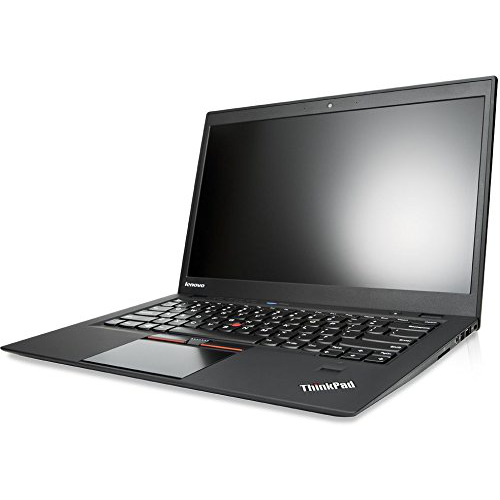Legacy Storage Benchmarking Methodology
Test Equipment
I’m a high-volume reviewer, working on an average of eight products per month. I also test devices still in development, often through several firmware revisions before the SSD launches. To maintain this pace while still providing quality commentary, I need several systems to stay ahead of the queue.
SATA Test System
| Motherboard | Asus Z87 ROG Maximus VI Extreme |
|---|---|
| Processor | Intel Core i7-4770K @ 4.5GHz |
| DRAM | Corsair Vengeance DDR3-1866 |
| Graphics | Intel HD Graphics 4600 |
| Power Supply | Corsair AX860i |
| Chassis | Rosewill RSV-L4000 |
| Hot Swap Drive Enclosure | Thermaltake MAX-1562 |
| Network | Mellanox ConnectX-3 VPI |
| Operating System | Microsoft Windows 8.1 Pro |
I’ve standardized on the above configuration for consumer SSD and hard drive reviews, utilizing four identical systems. These machines are dedicated to benchmarking SATA-based products. They also test enterprise network equipment from time to time. In order to keep them unchanged, I isolate them from the Internet, preventing automatic updates that might affect my results.
PCIe Test System
| Motherboard | ASRock Z97 Extreme6 |
|---|---|
| Processor | Intel Core i7-4790K @ 4.5 GHz |
| DRAM | Corsair Vengeance Pro DDR3-1866 |
| Graphics | Intel HD Graphics 4600 |
| Power Supply | Corsair AX1200i |
| Chassis | Rosewill RSV-L4000 |
| Hot Swap Drive Enclosure | Thermaltake MAX-1562 |
| Network | Mellanox ConnectX-3 VPI |
| Operating System | Microsoft Windows 8.1 Pro |
PCIe based storage is evaluated across a pair of purpose-built systems. The ASRock Z97 Extreme6 motherboard provides a direct PCIe 3.0 four-lane link from the CPU to M.2 interface. This is the ideal way to attach M.2-based storage to a high-performance, consumer-focused PC. These systems are also isolated from the Internet. The operating system configuration and test software are kept consistent between our PCIe- and SATA-based test beds.
I keep a few other systems available for specialty testing, cloning notebook battery life system images to drives and secure erase operations. In all, there are 29 modern systems at my disposal ranging from Sandy Bridge-based notebooks for testing storage products at trade shows to 10 identical dual-Xeon systems for testing network-attached storage (NAS) appliances with 120 clients running in Hyper-V.
We use two different notebooks to measure notebook battery life. Standard 2.5” SATA drives run through a Lenovo T440, one of the few laptops with DEVSLP support. I use a Lenovo X1 Carbon Gen 3 for testing PCIe- and SATA-based m.2 SSDs. The X1 Carbon Gen 3 ships with M.2 storage from Lenovo. There aren't many models with this feature, but that number should increase over the coming months.
Get Tom's Hardware's best news and in-depth reviews, straight to your inbox.

Chris Ramseyer was a senior contributing editor for Tom's Hardware. He tested and reviewed consumer storage.
-
damric How I test an SSD. HARD RESET my computer 20 times. If the SSD is still recognized by the motherboard, then the SSD controller is worth a flip.Reply
SSDs will never wear out due to IOPs. Only the controllers break. Quit kidding yourselves. -
schizz69 Great article. Always good to get a glimpse inside the process, which Tom's is always so willing to do.Reply
Thanks Chris. -
ssdpro You'll notice all these review sites keep their tests nice and short. That way Samsung stays happy and keeps buying ad space. If they tested a drive months apart Samsung would be exposed with those floppy disk slow reads.Reply -
Gurg None of these tests give the consumer any indication of the degredation of the performance of the SSD over time. While my systems have been become more powerful and the software has been updated, the performance of my main SSD used mostly for for W7 and hardware drivers and as measured by Passmark runs has declined by 38% in about three years.Reply -
unityole @Gurg, as SSD over time, either via temperature or usage or amount of data filled performance declines. if you secure erase and install new window and it'll back to brand new performance again, tbh i think this article cover most of it, maybe you're just confused between a good ssd or uncleaned window files slowing down your system.Reply -
ykki ReplyHow I test an SSD. HARD RESET my computer 20 times. If the SSD is still recognized by the motherboard, then the SSD controller is worth a flip.
And that will be all on your first day of "How to test hardware the MacGyver way"
Tomorrow we will learn to test psu's by putting them in microwave at 50 degree C for 60 minutes while it itself is powering the microwave.
Thank you. :lol:
-
damric Reply15491425 said:How I test an SSD. HARD RESET my computer 20 times. If the SSD is still recognized by the motherboard, then the SSD controller is worth a flip.
And that will be all on your first day of "How to test hardware the MacGyver way"
Tomorrow we will learn to test psu's by putting them in microwave at 50 degree C for 60 minutes while it is powering the microwave.
Thank you. :lol:
I choked on my drink you had me LOLing so hard :) -
unityole Reply15491425 said:How I test an SSD. HARD RESET my computer 20 times. If the SSD is still recognized by the motherboard, then the SSD controller is worth a flip.
And that will be all on your first day of "How to test hardware the MacGyver way"
Tomorrow we will learn to test psu's by putting them in microwave at 50 degree C for 60 minutes while it itself is powering the microwave.
Thank you. :lol:
calm down!!

